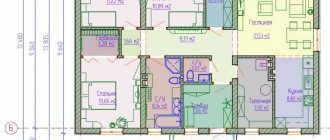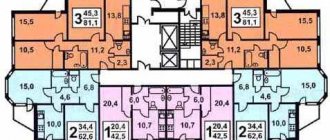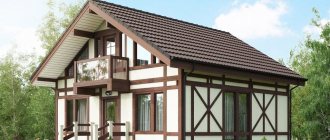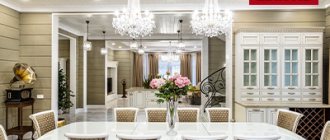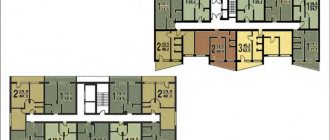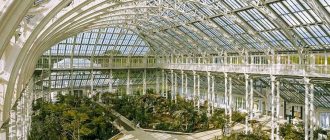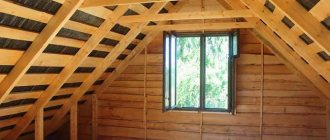Houses of the 19th century are a characteristic feature of the new era of developing capitalism. At this time, the appearance of large Russian cities was changing greatly. Technological progress and the growing new class - the large merchants, the owners of factories and factories set new tasks for architects. New types of buildings, train stations, large stores, and entertainment facilities were built: theaters, circuses. Capitalism in architecture was also characterized by the appearance of apartment buildings in cities.
19th century houses
You may be interested in:Medieval engravings: photos, description of features
Russian society of the 19th century was class-based, this influenced the houses in which their representatives lived. Much depended on the area of residence. The main categories of residential buildings of this time can be distinguished:
- Noble.
- Merchant.
- Meshchanskaya.
- Peasant.
- Profitable.
Each was distinguished by its own characteristics, which depended on the life of the representatives of the class, on wealth and purpose. So, there were city, rural houses and mansions, country estates. What was new was the appearance of country houses in the vicinity of cities, where people traveled during the summer season. The number of inhabitants in cities was constantly increasing. This is associated with the appearance of apartment buildings at the end of the 18th century, the construction of which began to rapidly develop in the 19th century.
You will be interested in: “Archival important” - how do you mean it?
Russia is a country with a huge amount of forests. Therefore, most of the houses were wooden. This was also due to the cold climate. Houses made of wood were warm and well built. In Moscow, St. Petersburg and other cities in the south of Russia, 19th-century housing was built from stone.
Temples of Glory, Truth and “Eternal Feelings” in the Penza region
1 / 8
View of the village of Nadezhdina from the east. Engraving by Joseph Mossmer. 1830s Wikimedia Commons
2 / 8
Summer house on the Kurakins' estate in Nadezhdino, Saratov province. Painting by Vasily Prichetnikov. Late 18th - early 19th century Tver Regional Art Gallery
3 / 8
Temple of Fidelity in the park of the estate of Prince A. B. Kurakin Nadezhdino. Painting by Vasily Prichetnikov. Late 18th - early 19th century Tver Regional Art Gallery
4 / 8
View of the estate. Painting by an unknown artist Tver Regional Art Gallery
5 / 8
A gallery called the Repository of Eternal Feelings. In the garden of His Excellency Prince Alexander Borisovich Kurakin in his village of Nadezhdino. Painting by Vasily Prichetnikov. Late 18th - early 19th century Tver Regional Art Gallery
6 / 8
Temple of Truth. In the garden of His Excellency Prince Alexander Borisovich Kurakin in his village of Nadezhdino. Painting by Vasily Prichetnikov. Late 18th - early 19th century Tver Regional Art Gallery
7 / 8
Temple of Lada. In the garden of His Excellency Prince Alexander Borisovich Kurakin in his village of Nadezhdino. Painting by Vasily Prichetnikov. Late 18th - early 19th century Tver Regional Art Gallery
8 / 8
View of the Nadezhdino estate. Early 20th century Wikimedia Commons
Catherine's era was a time of pretentious ideas that gave the Russian province many metropolitan-level ensembles. In the Serdobsky district of the Penza region, the famous Nadezhdino estate, created by the “radiant prince” Alexander Borisovich Kurakin (aka “diamond”), is dying. Having fallen into disgrace for his bad Masonic influence on the heir to the throne, Tsarevich Paul, he turned the place of his exile into a kind of suburban imperial court with a whole set of appropriate ceremonies and positions.
The main house, built in 1795, had 80 rooms, the park was decorated with pavilions with radiant names: the Temple of Glory, the Temple of Truth, the Temple of Patience and the Receptacle of Eternal Feelings. The paths in the park bore the names of Unexpected Consolation, Overcome Difficulties, True Understanding, Frequent Repetition, Remembering Past Joys, Immediate Achievement, Faithful Mistresses, Brother Stepan. In the middle of the park lay a black boulder with the words “Memento mori” written in gold. According to the owner’s plan, the park was supposed to be “an extract of the entire universe.”
1 / 5
Ruins of the facade of the Nadezhdino estate, Serdobsky district, Penza region. 2013 © Julya Terlova / CC BY-SA 4.0
2 / 5
Internal facade of the estate. 2013 © Julya Terlova / CC BY-SA 4.0
3 / 5
Side gate. 2013 © Nikolay Shadrin / CC BY-SA 4.0
4 / 5
Ruins of the interior of the estate. 2013 © Nikolay Shadrin / CC BY-SA 4.0
5 / 5
Ruins of the facade. 2013 © Julya Terlova / CC BY-SA 4.0
After the fire of 1922, the palace remained in the status of a romantic ruin. The outbuildings housed a rural house of political education, then a psychoneurological boarding school, now they too are abandoned. In 2014, a decision was made to sell the estate to a private investor, but the huge palace is still on the verge of destruction (the neighboring Zubrilovka, depicted in many paintings by Viktor Borisov-Musatov, is in exactly the same situation).
Features of Russian architecture of the 19th century
Russian architecture of houses of the 19th century predetermined the appearance of modern cities. In the first half of the century, the dominant trend was classicism with its rigor, order and clear layout. He embodied the ideas of antiquity, the rigor of canons and logic. Its main feature is the Tuscan order, which is enlarged and emphasized by the severity of massive walls, colonnades and arches. This applied to both urban planning in general and individual buildings. It was replaced by eclecticism - a mixture of elements of different styles.
Noble mansion
You may be interested in: What is acquisition?
The highest nobility in the cities built luxurious mansions, the construction of which attracted famous architects. Numerous family members and servants lived in them. On the ground floor there were utility rooms and servants' rooms. The second was occupied by several large living rooms, boudoirs and bedrooms. The third floor housed living quarters with low ceilings.
Mandatory attributes of mansions and estates were special rooms, the purpose of some of them is not entirely clear to modern people:
- Hallway. These premises could be found exclusively in Russian mansions and houses. In cold winters there was a large amount of outer clothing, which had to be removed and placed when entering a warm room. European houses do not have hallways. The place where fur coats, hats, and warm shoes were hung was fenced with railings. There were mirrors hanging here and chairs.
- The valet room, so named due to the fact that there was a valet on duty there. It was furnished with good quality mahogany furniture. The walls were decorated with paintings.
- Portrait room. Here on the walls hung portraits of family members or ancestors. The furniture was made of mahogany. The walls were painted in natural colors or covered with wallpaper. Often they were covered with designs imitating wallpaper.
- Cabinet. It was mandatory in 19th century noble houses or estates. As was customary, furniture was made from Karelian birch, poplar or mahogany. The walls were covered with wallpaper or painted to match it.
- Dining room. A large room where the owners dined and treated their guests. It was decorated with a large oval table, expensive furniture and paintings on the walls, which were painted in natural colors.
- Bedroom with boudoir. The hostess slept here. The bed was covered with a screen; in the corner there was usually an icon case where one could pray. The boudoir was separated from the bedroom. In it, the housewife could take care of her toilet and business: embroidery, correspondence. As a rule, there were other bedrooms for family members and guests in the house.
- Living room. The front room where guests were received. It was richly furnished, paintings hung on the walls, and upholstered furniture was installed for relaxation and conversation. The living room in the house of a 19th century nobleman was arranged in accordance with the prevailing style. It was a time of classicism with a clear rhythm and a unified style of placement of furniture and art objects. Mahogany furniture was decorated with chased items made of gilded bronze or brass. The French fashion for antique products implied the presence of statues that were located in living rooms. The decor of the room matched this. In a rich nobleman's house in the 19th century, where many guests were received, there were several living rooms.
You may be interested in: Institute of the Ministry of Emergency Situations in Minsk: address, faculties, passing grade
Foreigners were surprised by the double frames on the windows, large stoves reaching to the ceiling, decorated with beautiful tiles. The fireplaces were not lit in winter. Because cold air penetrated through them. They were closed for the winter and decorated with flowers. Foreign guests were also surprised by the huge number of flowers in the houses; they were everywhere.
The tale never ends
Today, most of the “fairytale” buildings house diplomatic buildings or embassies of foreign countries. Thus, in the Tsvetkovskaya gallery and the Pertsova house there are diplomatic buildings of the Ministry of Foreign Affairs of the Russian Federation, in the Shekhtel mansion there is the residence of the Ambassador of Uruguay, in the Igumnov house there is the residence of the Ambassador of the French Republic.
“When diplomatic relations were established with other countries during the Soviet period, our government tried to offer them the best mansions, built relatively recently for those times,” explains Philip Smirnov.
The local historian believes that the interest of Muscovites in these houses is understandable. Many people now do not leave the city limits, walk along the capital’s streets in their free time and take a closer look at the painted facades, which they probably did not notice before. “They are so colorful and magical that they encourage you to do your own research and find out what the tale is about,” he sums up.
House with mezzanine and tower of the Beijing Hotel: restored buildings in 2020
Noble estate
An estate is a complex that included a residential building and various buildings: utility, gardening, stables, human and others. They fit harmoniously into the manor park. If there was no river nearby, then a lake with an island was built, alleys were laid out, rotundas were erected, ruins and grottoes were laid out. Rich estates had a church. Manor houses were arranged according to the principle of city mansions.
There is such a thing as Russian estate style. It is quite unique; it was difficult to see anything similar outside Russia; the specifics of this style were determined by serfdom and long distances from large cities. The estate had many workers who lived here. Isolation from the city left its mark, as the nobles had to take care of the household and constantly communicate with the peasants.
Rare trips to district or provincial towns were a real event. Other estates were located tens of kilometers away, so guests did not come often. Furniture purchased after the construction of the house was passed on to the heirs. Fashion and style news arrived here late. But there were estates that were built by famous architects, some of which have survived to this day. These are real monuments of Russian architecture.
Experimental Quarenghi near Voronezh
1 / 6
The front facade of the main house of the estate in the village of Gorozhanka, Ramonsky district, Voronezh region. Late 19th - early 20th century Wikimedia Commons
2 / 6
The interior of one of the rooms of the main house of the estate in the village of Gorozhanka. Late 19th - early 20th century Wikimedia Commons
3 / 6
The facade of the main house of the Gorozhanka estate from the Don side. Before 1941 Wikimedia Commons
4 / 6
The front facade of the main house of the estate in the village of Gorozhanka. 1946 Wikimedia Commons
5 / 6
The front facade of the main house of the estate in the village of Gorozhanka in the Voronezh region. 2014 © Alexey Zadonsky / CC BY-SA 4.0
6 / 6
The facade of the main house of the Gorozhanka estate from the Don side. 2014 © Alexey Zadonsky / CC BY-SA 4.0
Another estate of non-standard architecture is Gorozhanka, Ramonsky district, Voronezh region, allegedly built in 1787–1794 by the architect Giacomo Quarenghi. The main house, standing high above the Don, had a very bright composition formed by a dome over a tower-shaped front hall and a semicircular garden terrace sandwiched between two narrow projections. It was built for the landowner Alexei Akindinovich Venevitinov - the famous Moscow poet Dmitry Venevitinov was the grandson of his older brother. Afterwards, the estate became the dowry of his great-granddaughter Ekaterina, who married the businesslike engineer Semyon Chokolov. She, like a normal heroine of Chernyshevsky, opened a sewing school-workshop for peasant girls in Gorozhanka, which grew into a separate trade - in 1900, the Gorozhanka carpet received a gold medal at the World Exhibition and was purchased by the Louvre.
After the revolution, the manor house was a commune of former street children, then a boarding school and a Cossack cadet school. In the 1970s, two Soviet three-story buildings were built on the sides of the house, and the house itself was abandoned. The interiors and the terrace are gone, the rest is in the process of gradual destruction.
Merchant's house
The development of capitalism has led to the emergence of free capital that requires investment. The rapid construction of houses by large merchants and manufacturers begins. Merchant houses of the 19th century, owned by very rich representatives of this class, were mostly similar to palaces. Famous architects were often invited to the construction.
But for the most part, merchant houses were good-quality wooden, wood-stone and stone, which overlooked the garden and vegetable garden. The courtyards were adapted for storing goods, the furnishings were very different, there is no need to talk about any style here. Along with the paintings purchased for the occasion, there were many icons. They sought to imitate the representatives of the upper classes in everything. But for the most part, only a few succeeded, those who received a decent education.
The nobility slowly went bankrupt, selling their estates. The merchant class grew rich and bought them, adapting them to their own way of life. But most of the nouveau riche taught their children not only in Russia, but also abroad. It was already difficult to distinguish the well-educated merchant children from representatives of the upper class. They arranged their 19th century homes in Russia differently than their fathers. They knew several languages, understood painting, architecture, and literature.
Late Baroque in Stupino
1 / 8
View of the Otrada-Semenovskoye estate. Painting by an unknown artist. Early 19th century State Historical Museum
2 / 8
The main house of the estate from the courtyard. Beginning of the 20th century Russian estates
3 / 8
The main house of the estate from the river side. Beginning of the 20th century Russian estates
4 / 8
Oval white dining room of the estate. Early 20th century Wikimedia Commons
5 / 8
Office of Count A.V. Orlov-Davydov. Beginning of the 20th century Russian estates
6 / 8
Manor Otrada-Semenovskoye. Until 1940 otrada-o.ru
7 / 8
View of the wing. Before 1940 deadokey.livejournal.com
8 / 8
Plan of the first floor of the main manor house. 1975 Russian estates
Otrada-Semenovskoye, Stupinsky district, Moscow region, one of the most famous and saddest abandoned estates, is located only 60 kilometers from the capital. This is a very late Baroque, dating back to the beginning of Catherine’s reign: the design of the platbands is still old-fashioned, and the crowning cornice already has classical detailing. In general, the customer of the construction, Count Vladimir Orlov, one of the brothers of the first favorite of Empress Catherine II, saw the house as a romantic “lordly castle” in the English spirit. The palace was built in 1774–1779 on the banks of the Lopasni River, it is surrounded by a park with a sundial, fountains, greenhouses, gates decorated with sculptures of lions and eagles, a family mausoleum and a temple standing on a hill above Otrada.
The facade of the building is elegant and simple, and the layout is very complex - a strict enfilade of the main volume is combined with risalits Risalit (from Italian risalita - “protrusion”) - part of the building protruding beyond the main line of the facade and running the full height of the building, where oval rooms fit and even a triangular plan. The corner rotundas and staircases surrounding them, completed in the mid-19th century, made the house even more picturesque. Just 10–15 years ago, one could see the interiors of the palace - with rich stoves and the finest paintings of walls and ceilings by Karl Bryullov himself.
1 / 7
The main house of the Otrada-Semenovskoye estate, Stupinsky district, Moscow region. 2014 Wikimedia Commons
2 / 7
The main house of the estate. 2021 © Vadim Razumov
3 / 7
The Orlov family coat of arms on the facade of the main house of the estate. 2016 © Vadim Razumov
4 / 7
Finishing one of the rooms in the main house of the estate. 2002 Russian estates
5 / 7
Interior of the main house of the estate. 2014 © kva_pharm / CC BY-NC-SA 2.0
6 / 7
Interior of the main house of the estate. 2014 © kva_pharm / CC BY-NC-SA 2.0
7 / 7
Interior of the main house of the estate. 2021 © Vadim Razumov
After the revolution, a small museum of noble life operated here, but in 1938, in the trans-river part of the park, a state dacha was built for Lavrenty Beria, and since then the estate has belonged to special departments. The NKVD school, the KGB pioneer camp were located here, and now the palace and its surroundings are located on the land of a closed FSB sanatorium. The estate was faithfully restored in the 1980s, but in 1998 the palace was removed from the federal register and was soon looted (including roofing iron). A search is underway for an investor to restore the monument, since neither the Federal Property Management Agency nor the FSB are ready to take on such troubles. The house stands with a collapsed roof and moldy walls, and minimal work to preserve it is carried out only by rare volunteer cleanup workers.
Bourgeois house
The bourgeois class included teachers, day laborers and hired workers. They made up the majority of the population of cities, and their numbers became especially large after 1861, when serfdom was abolished. The housing of the bourgeoisie was rented or a modest house of their own. Most often they were small, built like rural houses. Their styles corresponded to the area where they lived.
Apartment houses
The development of cities, the growth of industrial enterprises, and educational institutions have resulted in the emergence of a large number of people who cannot afford to build or buy a house. This category includes teachers, doctors, bankers, civil servants, engineers, professors, and students. They needed comfortable, well-equipped apartments that could be rented.
You may be interested in: Collider in Russia. NICA (Nuclotron-based Ion Collider fAcility) project. Joint Institute for Nuclear Research (JINR) in Dubna near Moscow
In cities, especially in St. Petersburg and Moscow, city authorities were building infrastructure. The construction of buildings where apartments were rented was carried out according to the designs of famous architects. At the end of the 19th century, there were more than 550 such houses in Moscow alone. In St. Petersburg, 80% of the buildings constructed were profitable. House owners tried to attract noble tenants. This was done for advertising purposes. The buildings used for rental apartments were built around the university. His professors and teachers rented excellent apartments here.
In addition to them, employees, young families, specialists, and doctors settled in apartment buildings. Houses were also built for less affluent segments of the population: small employees, workers, students. Where you could rent a room or a small apartment, where the cost was much lower. There were also so-called shelters, where housing was rented out - a room or a bed for the night.
Russian rural style
Village houses of the 19th century had their own styles and characteristics. They can still be found in rural areas and small towns. They were built in one, less often in two floors. Traditionally, these were four- or five-walled log houses with a gable or three-pitched roof, but in the eastern or southern regions you can find a hipped roof. A distinctive detail of the Russian rural style was the light fixture, which was located in the attic.
The house was built in two versions. The first consisted of one hut with a large entryway. The second is made up of two huts, which were called the front and back, connected to each other by a wide walkway and an entryway. All this was under one roof. The area around the house was not fenced off with a solid fence; only front gardens were built. The decoration of such buildings was carved platbands. Also, houses in the Russian style were built of brick and could be two-story.
Autograph of Matvey Kazakov near Moscow
1 / 6
The Petrovskoye-Alabino estate in the Naro-Fominsk district of the Moscow region. 1906 archnadzor-ru.livejournal.com
2 / 6
The main house of the estate. 1920s Russian estate
3 / 6
Entrance obelisks and the facade of the main house. 1920s Russian estate
4 / 6
The main staircase of the main house, decorated with figures of sphinxes. Beginning of the 20th century Russian estates
5 / 6
Petrovskoye-Alabino estate. 1930–1932 arch-heritage.livejournal.com
6 / 6
Plan of the first floor of the estate from the book by N. Ya. Tikhomirov “Architecture of Moscow Region Estates”. 1955 deadokey.livejournal.com
The Petrovskoye-Alabino estate in the Naro-Fominsk district of the Moscow region was built in the 1770s and 80s for another representative of the Demidov dynasty - Nikita Akinfeevich, the owner of the Ural Nizhny Tagil factories. Researchers suggest that two famous masters, Matvey Kazakov and Ivan Starov, were involved in the construction, and a foundation slab with the scratched inscription “Architect Kazakov” was found in the basement of the house.
The house (a square plan with beveled corners), diagonally arranged pavilions and entrance obelisks form a conceptual composition reminiscent of the ingenious pavilions of Tsaritsyn Park. The house was decorated with signature Demidov cast iron, including sphinxes at the entrance and a statue of Catherine the Great on the belvedere dome that crowned the building. Belvedere is a viewing gazebo, most often cylindrical in shape, which was located on a hill or the roof of the building..
1 / 4
Entry obelisks of the estate in Petrovsky-Alabino. 2016 © Vadim Razumov
2 / 4
Facade of the main house of the estate. 2021 Wikimedia Commons
3 / 4
Facade of the main house of the estate. 2021 Wikimedia Commons
4 / 4
Inside the main house. 2021 Wikimedia Commons
In the 20th century, the main house was robbed, burned, and dismantled for bricks. According to one version, in 1941, a charge was placed inside the house to extract crushed stone for the construction of the road; only the outer walls survived. The masterly interior layout has indeed been completely lost, and now everything else is gradually crumbling. The monument is under state protection, being the property of the Federal Property Management Agency.

